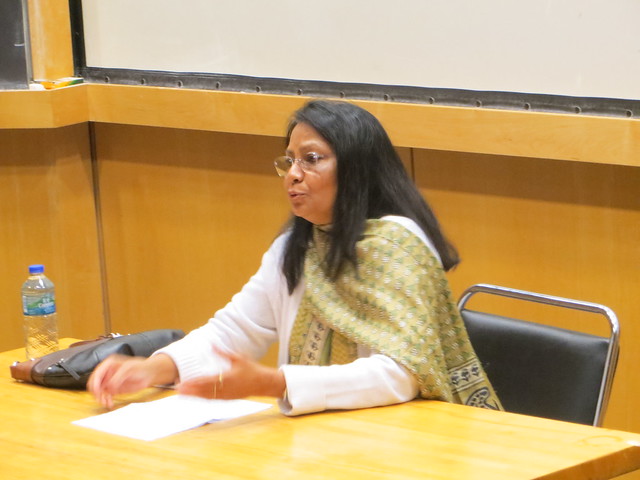‘Babasaheb Ambedkar instilled a consciousness in women who then resolved to have their children, especially daughters, educated’
By Umang Kumar for TwoCircles.net,
Cambridge MA: Professor Vimal Thorat, current co-convener at the National Campaign on Dalit Human Rights (NCDHR) and former professor of Hindi at Indira Gandhi National Open University (IGNOU) spoke at the Massachusetts Institute of Technology (MIT) on “Caste and Gender in Dalit feminist writing” on Thursday, May 21. The event was organized by the Alliance for a Secular and Democratic South Asia.
Professor Thorat, who is also on the editorial board of a Hindi magazine on Dalit literature produced by the Indian Institute of Dalit Studies in Delhi, Dalit Asmita, structured her talk around various autobiographies of Dalit women that started appearing with greater frequency since the 1970s. “Today they number in the hundreds,” she said.
Most of these autobiographies have emerged from Maharashtra.
Among the early publishers of such autobiographies was Baby Tai Kamble, who was also among the first generation of Dalit women who were educated. An English translation of Kamble’s work is available under the title, “The Prisons We Broke.”
“It was Babasaheb Ambedkar’s inspiration that instilled a consciousness in women who then resolved to have their children, especially daughters, educated,” Thorat said.
“Whenever Babasaheb organized some public meeting, he reserved the second day to exclusively address women. At the 1942 All India Depressed Classes Women Conference organized by him in Nagpur, around 25000 women attended, most of whom were not literate,” she added.
Kumud Pawde, a professor of Sanskrit, recounts in her book Antahsphot how her (upper-caste) colleagues would start leaving whenever she entered the principal’s office in her college. She was constantly taunted by her other colleagues: “‘It must be Kalyug that our children have to learn Sanskrit from you,’ they told her,” Professor Thorat said.
Shantabai Kamble was another pioneer among Dalit women expressing themselves and writing their own stories. Her autobiography recalls her difficult childhood when her mother was the sole breadwinner – she collected and sold firewood. There were days when the family would have no food if it rained heavily: there was no dry wood to sell, or even cook food over.

Prof Vimal Thorat
“These autobiographies shed light on the poverty that many Dalits live in, especially women. It is a vicious cycle – their degraded status confines them to marginal or undesirable occupations and these never pay enough to make ends meet,” Thorat said.
Kausalya Baisantry’s Dohra Abhishaap (Double Curse) narrates her own story of domestic abuse and her final separation from her husband, a civil servant, after 33 years of marriage. “This account was an eye-opener for the Dalit middle class,” Thorat said.
Urmila Pawar, another author Prof Thorat spoke about, tells the story of her mother in her autobiography Aidaan (Basket). Her mother used to knit baskets for a living but she was firm in her resolve that her daughter should get an education.
In the Q & A session she elaborated on how Dalit women write about eating chaani– dried strips of cow meat obtained after the carcass of dead cows was disposed of, a traditional occupation among Dalits. “Some autobiographies describe how women carried baskets of the cow meat over their head in baskets to safe places, blood seeping through over their heads, and up above, vultures and crows trying to snatch away the meat.”
Asked what differences Dalit politicians like Mayawati made, especially for Dalit women, Professor Thorat said that she came to power with the hard work of more than 20 years on the part of Kanshi Ram. “However, she was never received warmly; there was always suspicion and criticism,” she added.
“What these women writers have done – bringing caste and gender together – is a very tough job. They also brought new language into the writing in the process – because there were no socio-cultural interactions with the other higher castes. Their language, their habitations are very different. They use different symbols, a different mythology – it is a different world,” Professor Thorat observed.

